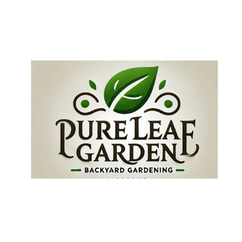The Ultimate Guide to Growing Your Own Organic Tomatoes at Home
Enjoy fresh, chemical-free tomatoes right from your garden. Learn everything you need to know-from choosing the best varieties to organic soil preparation, watering, natural pest control, and harvesting juicy homegrown tomatoes.
3/13/20253 min read
How to Grow Your Own Organic Tomatoes at Home
Growing your own organic tomatoes is one of the most rewarding experiences for any home gardener. Not only do homegrown tomatoes taste better than store-bought ones, but you also have full control over how they’re grown—free from harmful chemicals and pesticides. Whether you have a large backyard, a small patio, or just a sunny balcony, you can successfully grow delicious, organic tomatoes at home.
In this guide, we’ll walk you through everything you need to know, from selecting the right varieties to harvesting juicy, flavorful tomatoes.
Choosing the Right Tomato Variety
Before planting, it's important to choose the right type of tomato for your space and growing conditions. Here are some popular organic-friendly varieties:
Best Tomatoes for Containers & Small Spaces:
Cherry Tomatoes (e.g., Sweet 100, Sun Gold, Tiny Tim) – Easy to grow, fast-producing, and great for snacking.
Roma Tomatoes (e.g., San Marzano, Plum Regal) – Perfect for sauces and paste, these grow well in containers.
Best Tomatoes for Larger Gardens:
Beefsteak Tomatoes (e.g., Brandywine, Cherokee Purple) – Large, flavorful tomatoes ideal for slicing.
Heirloom Tomatoes (e.g., Black Krim, Mortgage Lifter) – Unique colors and deep flavors, but require more care.
Choose organic, non-GMO seeds or seedlings to ensure truly organic growth from the start.
Non-GMO seeds
Finding the Best Spot for Your Tomato Plants
Tomatoes love sunlight, so pick a location that gets at least 6-8 hours of direct sun daily. If you're growing in containers, choose a south-facing balcony or window for optimal sun exposure.
Preparing Organic Soil for Tomatoes
Tomatoes thrive in rich, well-draining soil with plenty of nutrients. To create the perfect organic soil:
Use Organic Potting Mix – Avoid chemically treated soil. Look for organic-certified options.
Add Compost – Compost improves soil structure and adds essential nutrients.
Use Natural Amendments – Add crushed eggshells (for calcium) or banana peels (for potassium).
Ensure Good Drainage – If planting in containers, use pots with drainage holes to prevent waterlogging.
Planting Your Tomato Plants
From Seeds:
Start seeds indoors 6-8 weeks before the last frost date.
Use small pots or seed trays filled with organic potting mix.
Keep soil moist but not soggy, and place pots in a warm, sunny area.
Once the seedlings are about 6 inches tall, transplant them into larger containers or the garden.
From Seedlings (Easiest Method for Beginners):
Dig a hole deep enough to bury two-thirds of the stem—this encourages strong root growth.
Space plants 18-24 inches apart to allow proper air circulation.
Water thoroughly after planting.
Recommended seed trays:
Providing Proper Support
Tomatoes need sturdy support to keep plants upright and prevent disease. Choose from:
✔ Tomato Cages – Great for smaller varieties like cherry tomatoes.
✔ Stakes – Ideal for larger varieties like Roma or Beefsteak.
✔ Trellises – Perfect for vertical gardening in small spaces.
Tip: Tie plants loosely to their support structure as they grow.
Watering & Mulching for Healthy Growth
Water deeply at the base of the plant 2-3 times per week, rather than shallow daily watering.
Morning watering is best to prevent fungal diseases.
Apply organic mulch (straw, shredded leaves, or wood chips) around the base of plants to retain moisture and suppress weeds.
Organic Fertilization for Strong Plants
For the best-tasting tomatoes, use natural fertilizers like:
Compost Tea – Provides essential nutrients and beneficial microbes.
Fish Emulsion or Seaweed Extract – A gentle, organic fertilizer.
Epsom Salt (Magnesium Sulfate) – Helps prevent yellowing leaves and improves fruit quality (use sparingly).
Apply fertilizer every 2-3 weeks throughout the growing season.
Preventing Pests & Diseases Naturally
Since we’re growing organic tomatoes, we’ll avoid synthetic pesticides. Here are some natural solutions:
Common Tomato Pests & Organic Solutions:
Aphids & Whiteflies → Spray with a mixture of neem oil and water.
Hornworms → Hand-pick them off or attract natural predators like ladybugs and birds.
Slugs & Snails → Use crushed eggshells or coffee grounds around plants.
Preventing Tomato Diseases:
Rotate crops yearly to prevent soil-borne diseases.
Avoid overhead watering—water at the base to keep leaves dry.
Prune lower leaves to improve air circulation and prevent fungal infections.
When & How to Harvest Your Tomatoes
Tomatoes are ready to harvest when they turn their full color and feel slightly soft when gently squeezed.
Harvesting Tips:
Pick tomatoes just before they are fully ripe and let them finish ripening indoors.
For vine-ripened flavor, wait until they are fully colored and twist them off the vine.
If frost is coming, pick green tomatoes and let them ripen on a sunny windowsill.
Storing & Enjoying Your Organic Tomatoes
Fresh Tomatoes – Keep at room temperature for best flavor. Avoid refrigerating.
Freezing Tomatoes – Blanch, peel, and freeze for use in sauces.
Homemade Tomato Sauce – Slow-cook and store in jars for year-round enjoyment.
Sustainability
Eco-friendly supplies for nurturing your garden.
Cultivating
© 2025. All rights reserved.
